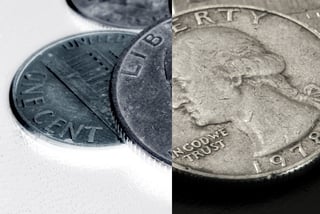Two Sides of the Coin When Calculating Credit Union Technology TCO
 Keeping up with the latest and greatest in credit union technology is an ongoing battle and essential to maintaining your competitive edge in the credit union marketplace. As all credit union CEO's and CTO's know all too well, the cost of staying on top and always having the 'best in breed' technology and tools often comes at a steep price. Careful consideration needs to be taken when evaluating the true cost of your technological investments, and the financial impact of their utilization over the course of their lifespan. No successful analysis on the Total Cost of Ownership (TCO) is complete if you include only the costs of initial investment and long-term operational expenses, and not take into account the cost savings achieved through operational efficiencies the technology provides.
Keeping up with the latest and greatest in credit union technology is an ongoing battle and essential to maintaining your competitive edge in the credit union marketplace. As all credit union CEO's and CTO's know all too well, the cost of staying on top and always having the 'best in breed' technology and tools often comes at a steep price. Careful consideration needs to be taken when evaluating the true cost of your technological investments, and the financial impact of their utilization over the course of their lifespan. No successful analysis on the Total Cost of Ownership (TCO) is complete if you include only the costs of initial investment and long-term operational expenses, and not take into account the cost savings achieved through operational efficiencies the technology provides.Starting with the obvious, the cost of the software, hardware and training, then moving on to enumerate the long-term and operational expenses. These expenses should include future upgrades, providing adequate security measures and detailed backup and recovery plans, in addition to maintenance measures, staff resources and training. However, technology is in place not just as a line item on the expense sheet but should provide added operational efficiencies to offset the investment. Investing in the right core technology will help lower your overall operational expenses by creating efficiencies in many ways, from speeding up the loan process to automating formerly manual processes that put a strain on staff.
One way to assess or compare the expense of your current technology is to break down the "cost per member." In performing a credit union core system review, the overall cost of your technology (up-front and recurring charges) is divided by your member base in order to come up with a "cost per member." This number can be used as your benchmark when evaluating your current system with the potential cost of a new one. You can look at this in two ways: With not investing in technology, you may maintain a low cost per member, but it is unlikely your member base will grow. By investing capital into technology that adds value to your members, you stand to gain more members and grow. so even though costs rise, your cost per member ratio does not increase, and in many cases, will lower as your member base increases (economies of scale).
The capabilities a system offers along with the time and cost savings it provides to both your members and employees is key to understanding true TCO. For example, using smarter technology in credit union data processing can help to streamline your loan originations or perhaps generate reports to help you pinpoint areas for improvement. Being able to integrate certain tools, such as e-Signatures, DocuSign, eDoc and TrueChecks can help increase the flow of business, all while not needing to hire more employees. These are just a few examples to take into consideration when evaluating the TCO.
Choosing the most fitting and efficient credit union software is a vital step when planning ahead for membership growth and expanding your products and services. The most expensive option doesn't necessarily guarantee the return expected in new member growth, but shortchanging your investment, or sticking with the status quo, puts you at a disadvantage when competing for new members. Remember, the purpose of great technology is to enhance your member's overall experience and satisfaction. Adopting an "if you build it, they will come" mentality means you position yourself for increased revenue. When calculating the TCO, there needs to be a plan in place that allows for future growth and the seamless addition of technology that will ensure you stay ahead of the curve and improving your key efficiency ratios.



